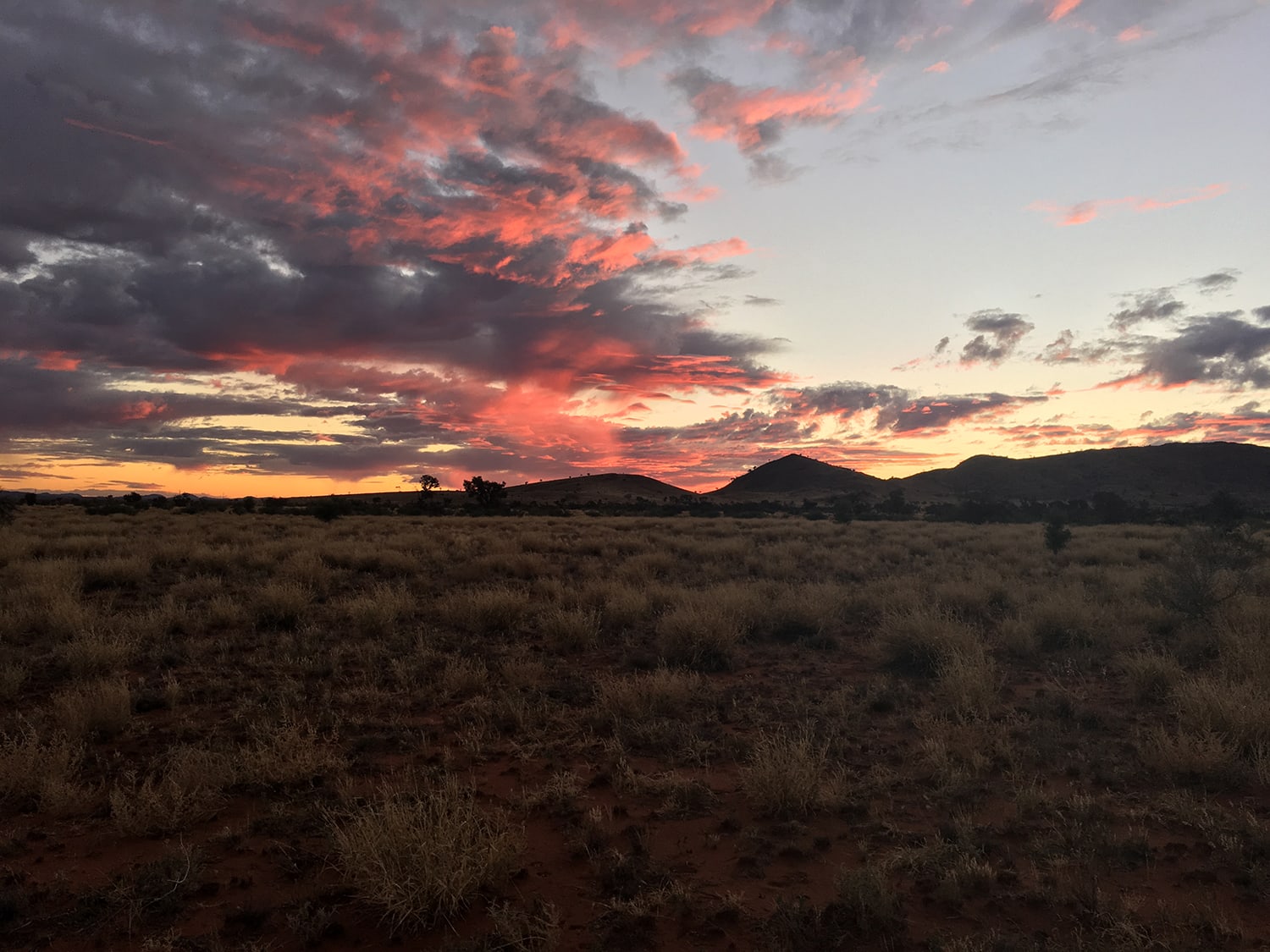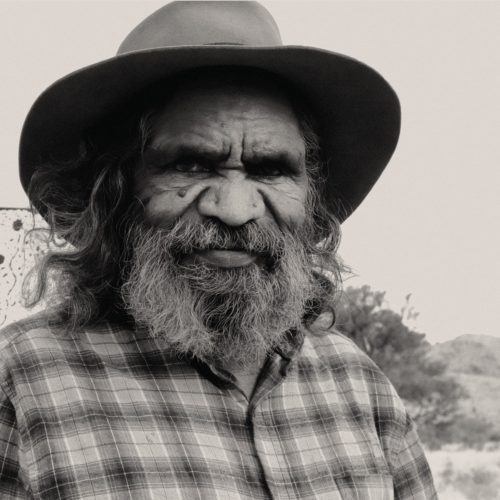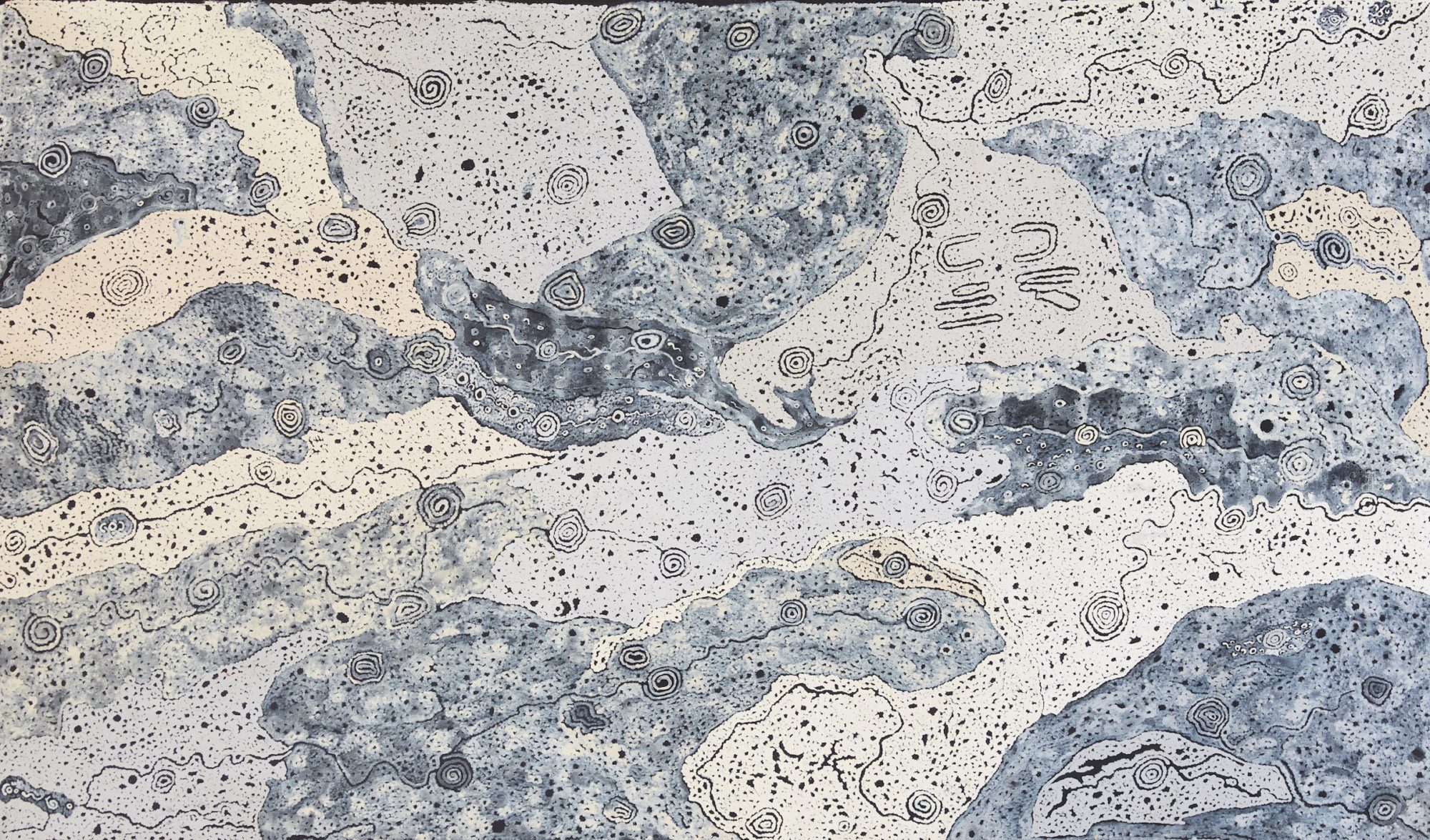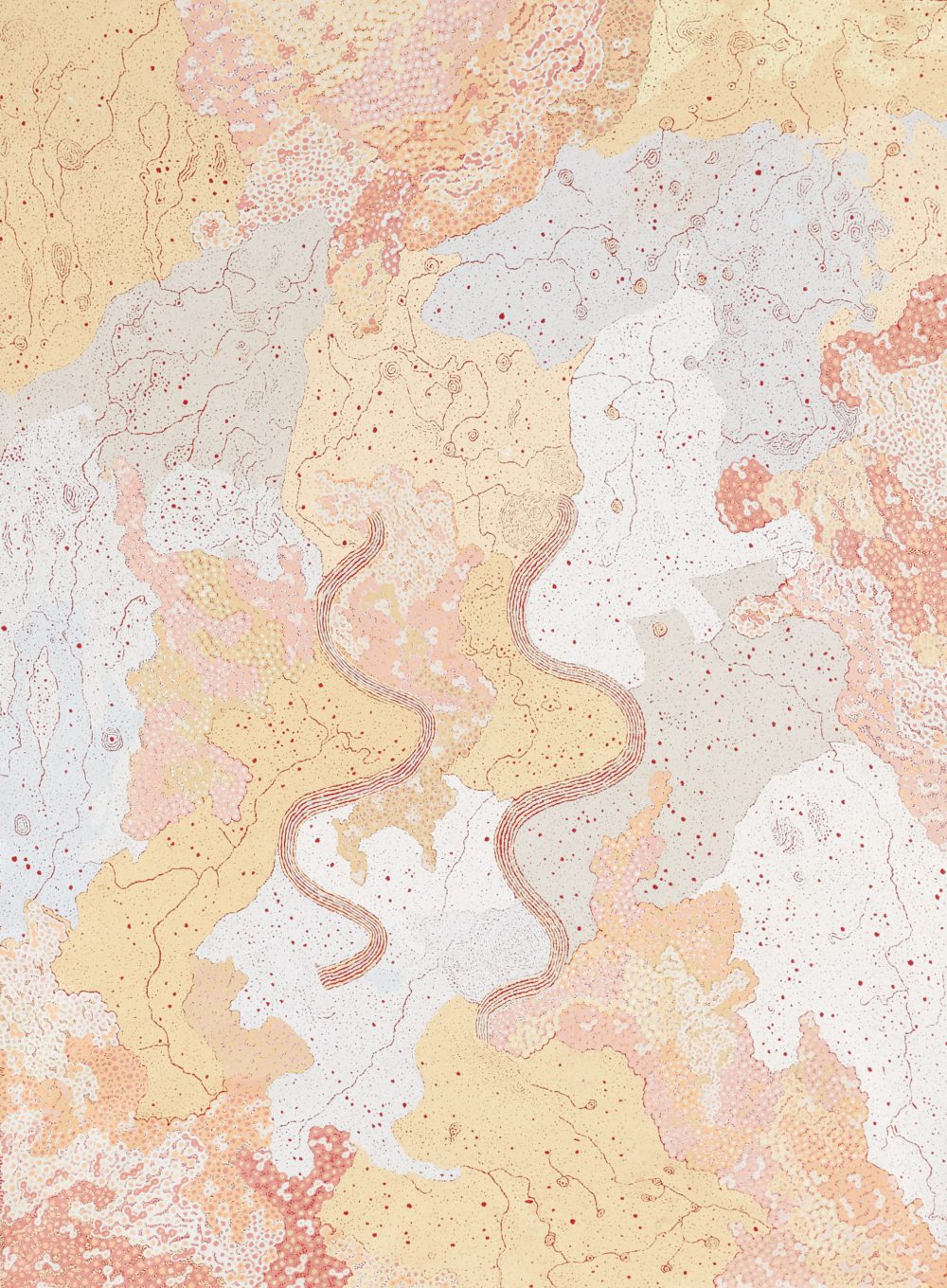
Keith Stevens
Keith Stevens’ ancestral homelands provide the platform for human and other dramas as rich and monumental in scale as any conceived by Shakespeare, Molière or for that matter, the creators of great Indian epics like The Ramayana.”


KEITH STEVENS IS A PITJANTJATJARA ARTIST BORN IN THE FAR NORTH OF SOUTH AUSTRALIA AT GRANITE DOWNS CATTLE STATION WHERE HIS PARENTS WERE WORKING IN THE 1940S.
Following in his parent’s footsteps he was mustering at an early age and had no schooling until moving to Pukatja (Ernabella) as a young boy where he attended the mission school. Keith’s family would travel for weekends to their traditional homelands of Piltati and Iwarrawarra, eventually moving to Piltati creek at what is now Nyapari Community.
Keith is a respected senior man in traditional law and a strong community leader. He comes from an artistic family: his mother Kunmanara (Eileen Yaritja) Stevens and his uncles Kunmanara (Tiger) Palpatja and Ginger Wikilyiri are well known for their depictions of Piltati, the ancestral story for Nyapari.
Piltati is a beautiful place, an oasis, a rock hole that never runs dry, a lifesaving destination. Piltati also provides the platform for human and other dramas as rich and monumental in scale as any conceived by Shakespeare, Molière or for that matter, the creators of great Indian epics like The Ramayana.
The site is home to the Wati Kutjara Tjukurpa – two brothers who are married to two sisters. The two Ancestral Men are in fact classic Indigenous ‘trickster’ figures. Monstrous and exceedingly dangerous, Wanampi (Rainbow Serpents or Rainbow Snakes) are said to have the capacity to manifest themselves on the earth not only in human form but also to make themselves invisible, living in waterholes and rockholes jealously guarding those precious water sources. The two Wanampi brothers live in the rockhole at Piltati.
Wati kutjara nyinanyi kunkunpa. [The two men are sitting down sleeping]. They have been painting inside the cave. When they wake up they start looking for the two women. They turn into Wanampi to trick the women and hide in the hole the women have been digging.
This narrative relates to these Ancestral Men behaving badly: deception, sloth, and exploitation of women during the Tjukurpa possess all the elements of high drama. In other sequences of the same narrative the sisters retaliate by eating all the food that they have collected without sharing any with their husbands. In response, the Two Snake Men demonstrate their cannibalistic qualities by swiftly devouring the two sisters to whom they are married.
That Stevens conceives these epics in dramatically visual terms crystallizes their intensity. In his paintings we can observe the full range of Ancestral and human activity and behaviour, from benign to malevolent and everything in-between.





